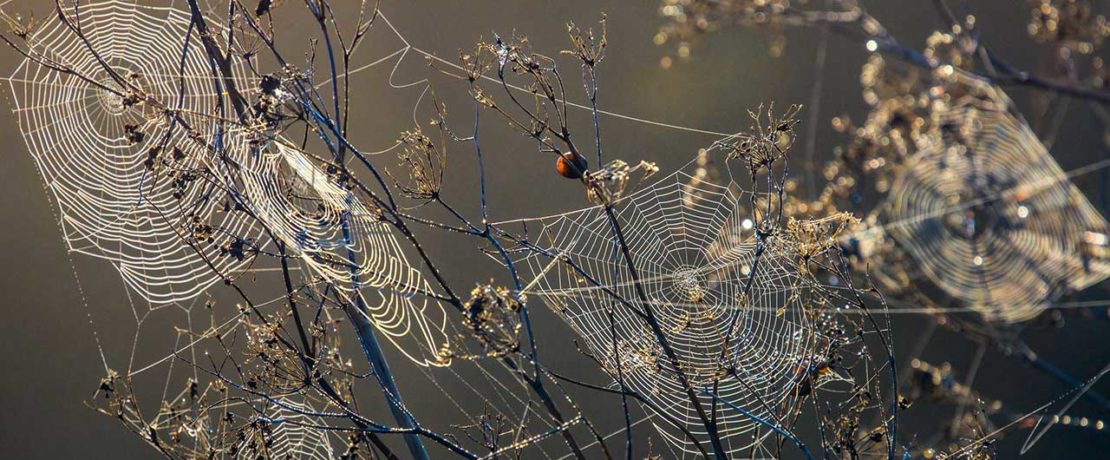Spider season again! The top six spiders you’ll spot at home in autumn
Our spidery spotter’s guide to some of the most common spiders you’ll see around in autumn – and some fascinating facts to help you learn to love and admire our eight-legged friends.
It’s that time of year again. The nights are darkening, the heating is back on and hot chocolate under a cosy blanket takes the place of cool summer drinks in the garden.
And with this come some new housemates; yes, it’s spider season again.
The UK spider season: the basics
So why does autumn seem to bring in so many spiders? Well, the same reason that we hunker down instead of those lazy barbeque evenings; the weather’s getting colder and the spiders are tempted into houses, sheds and garages by the prospect of a bit more warmth.
And the million-dollar question: do UK spiders bite, or can they be dangerous?
Good news! Unlike our pals down under, we really don’t need to worry here about dangerous spider bites. The experts at the Natural History Museum soothingly tell us that of the hundreds of UK spider species, only 12 can give us a nip at all – and only two or three of these would give a painful bite.
This is a good reminder of how well-adapted spiders are for their hunting, as all spiders can give a bite – but most don’t have fangs that can make an impact on human skin. These little companions aren’t interested in chomping on us but, like all of us, are just after a good feed.
Want to how to identify some arachnids? We’ll introduce you to six of the most commonly spotted spider species you might find yourself sharing space with.
Daddy longlegs
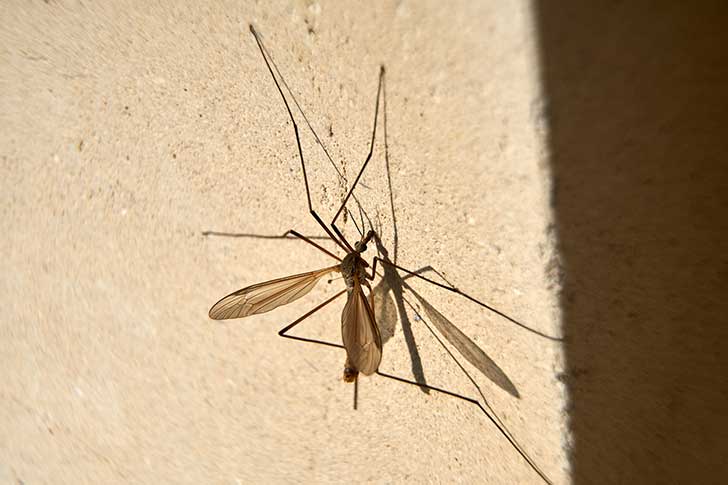
Ok, ok, we admit: this one is a bit of a cheat, as these gangly, flapping home invaders aren’t really spiders at all. In fact, if they remind you of a large mosquito (shudder), you’re not wrong, as daddy longlegs are actually a kind of crane fly.
These tend to pop up in early autumn, as the summer draws to a close and they flutter in through open windows, attracted to the lights. Unlike their mosquito cousins, though, they won’t bite or sting – they’re harmless, if disconcerting with their wobbly motion.
If it feels like they’re intent on flapping towards you, don’t panic – they’re probably just trying to fly up towards a light source, and not gunning for your face!
We love the name of these wonky, chaotic flying beasties – also sometimes known as jenny longlegs or jennys in Scotland.
Cellar spider, or daddy longlegs spider
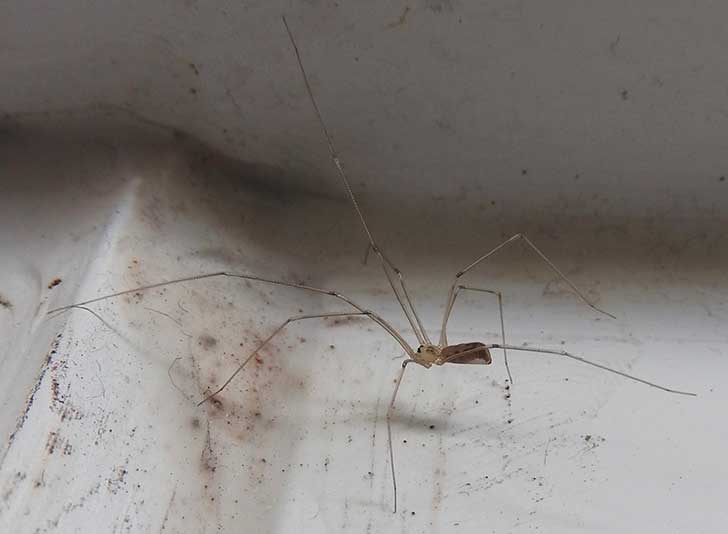
Things are about to get confusing, so hold on tight! This next one shares its name with our previous non-arachnid interloper – but definitely is a spider.
The daddy longlegs spider, also called the cellar spider (because you guessed it, it likes to live in cellars) shares its long limbs with the crane fly but doesn’t have wings, and might be seen at any time of the year.
You might spot these hanging out in the corners of rooms – these work best for their loose webs and to hang from. And like so many of us, they prefer to be warm and comfortable, so you’ll generally find them inside your house as opposed to outside in gardens.
These also have a rather gangly action, but if they seem to be moving rather wildly, don’t panic – they’re most likely wiggling to try to scare off a predator (erm… probably you).
Harvestman spider
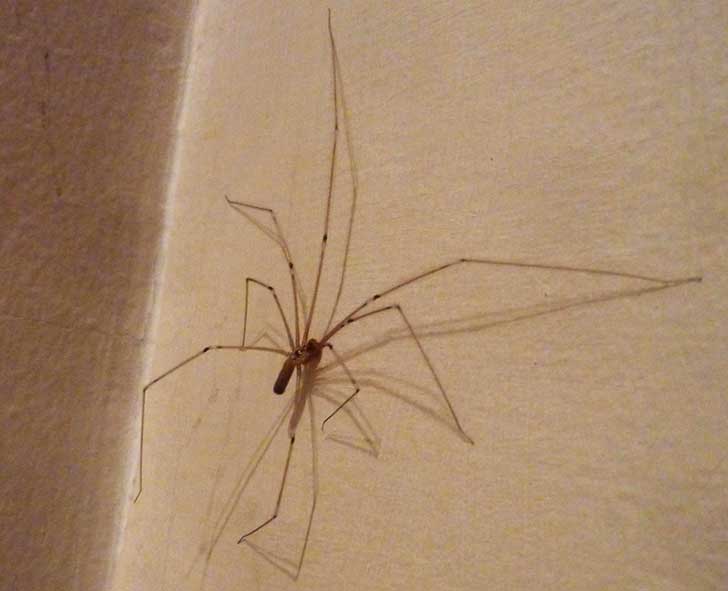
Let’s complete our trio of confusingly similar, long-legged beauties. Firstly though – another confession. Harvestmen are also not spiders! They’re closely related, but part of a seperate order (Opiliones). Harvestmen once again have those distinctive very spindly legs with a slim, stick-like body. You can spot them all year round, and unlike their cellar spider friends don’t in fact spin webs.
These hungry devils aren’t fussy about what they eat, either – they’ll eat fruit, small insects, even mushrooms! There are lots of different kinds of harvestmen, too, and the males and females look different (the female of the species is more… large than the male), so knowing quite which type you’re looking at is hard.
Whatever kind they are, they’re a staple of English gardens, homes and countryside!
Zebra jumping spider
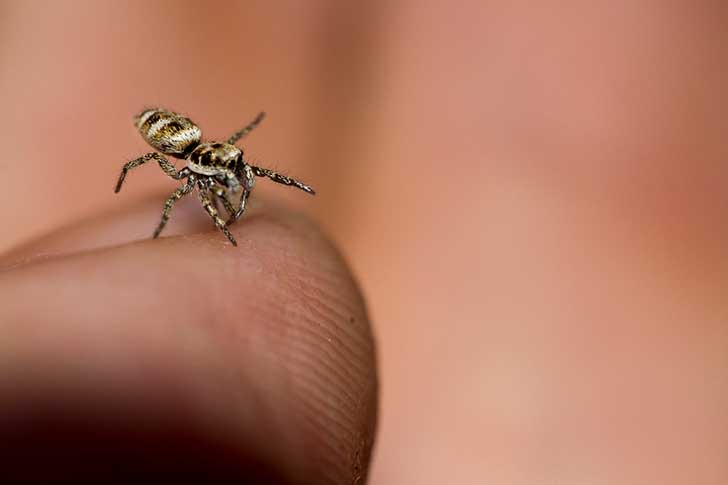
Have you ever spotted a small, squat, dark-looking spider at home, reached for a glass and piece of paper to gently trap it and then been startled as it appeared to bounce away?
Yep, we’ve all been there. Introducing the zebra jumping spider!
Although their leaping action can be a bit startling, they’re not poisonous or dangerous. And you have to hand it to them – those leaps are impressive! For such small spiders (less than a centimetre), they can really cover some distance when they hop, travelling over 14 times their own body length.
These also don’t catch insects in webs – instead, they use those leaps to pounce on unsuspecting prey. Look out for them and their distinctive black and white zebra-striped backs over the summer and into October, coming inside through open windows and doors.
Giant house spider
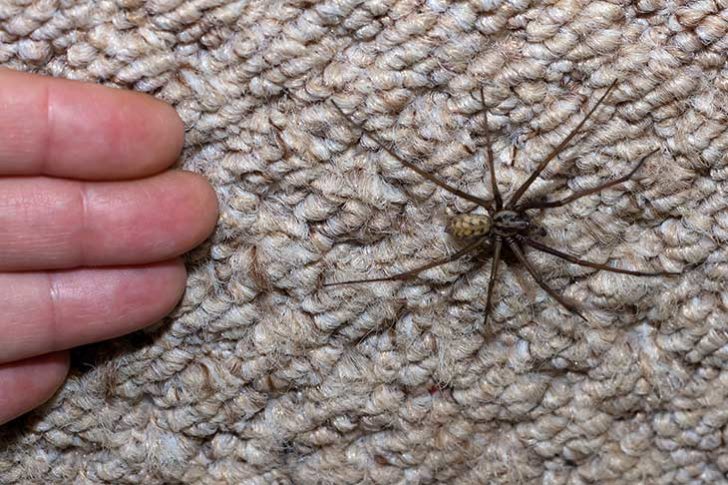
These harmless but rather menacing-looking spiders are a real autumnal feature in the UK. They head out and about to mate at this time of year and can make for a rather startling combination of large, chunky, brown bodies (from a centimetre up to 1.6mm) and unexpected bursts of speed.
In fact, they can really go at a rate of knots – up to half a metre in a second! They’re the Usain Bolt of the insect world, one of the fastest we have in this country, and they prefer to live inside, sometimes seen dashing across floors. You might also see them stranded in your bath tub – offer them a handy escape route by placing a length of loo roll on the edge of the bath!
Alarming they might be – but remember, the thin sheets of webs that they spin are great for catching little insects and flies!
Orb weaver spider, or garden spider
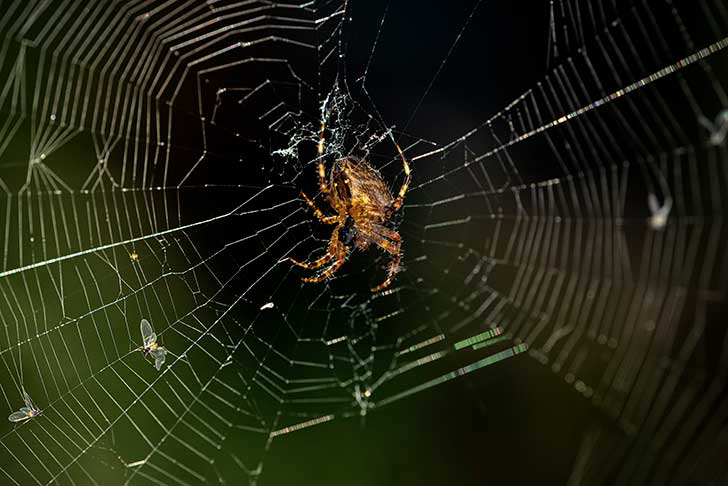
It’s late autumn, into winter- heading into November. Perhaps you’re walking along a row of houses, turning your collar up against the cold, and, again and again, notice beautiful spiral webs between bushes and trees in each garden. In the centre of these webs? A brown, patterned spider, no more than 2cms big.
Introducing the orb weaver spider, or more specifically, the most common kind of orb weaver spider that we have: the garden spider.
These are helpfully quite easy to recognise, too; as well as their iconic, traditionally-spider-web-shaped webs (lovely round spirals that they sit within and wait for the vibrations of a struggling insect), they have white, speckled cross-like markings on the back of their brownish bodies.
Spider friends forever?
Now you know six of your friendly local spiders (ok, five spiders and one crane fly), you can make friends with them around the house.
If you’re really not a fan of sharing your space with your uninvited guests, then avoid chemical treatments to repel or kill them – these little beauties are great for biodiversity and so be sure to relocate them gently outside.
Happy autumn, and enjoy spider season! (waves goodbye with all eight legs)
